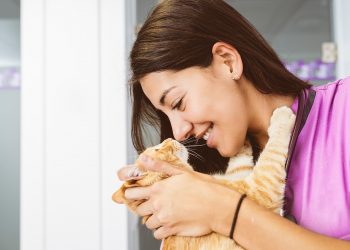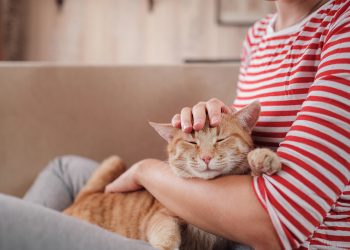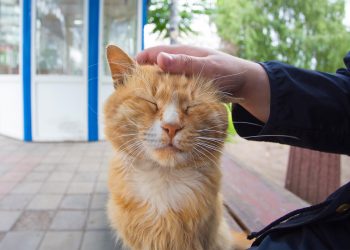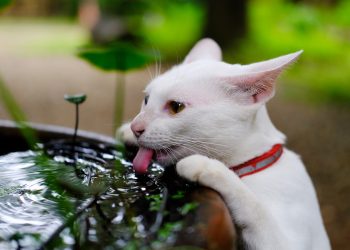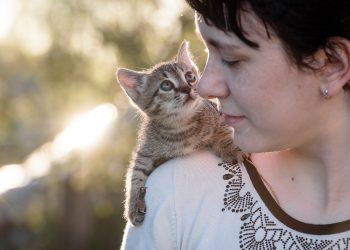Whether the ubiquitous image of 4 black cats or the grey black, white cat, cats with black and white markings are famous. What kind of cat is a black and white cat? These cats are sometimes referred to as tuxedos or piebald cats. Tuxedo refers to the characteristic coat insignia that resembles a formal dinner outfit. Domestic cats of mixed breed, popularly known as moggies, may exhibit black and white markings.
Tuxedo cats are most recognizable for their bicolored coats that resemble little tuxedos. Although most tuxedo cats are black and white, these stunning felines can have coats of many hues, including gray, silver, orange, and tortoiseshell with white patches. However, there is much more to tuxedo cats than their appearance. Today, we will discuss some black and white cat types to answer the question – what breed is my black and white cat?

What Is a Black and White Cat Breed Called?
Black cat vs white cat:
Bicolor or piebald cats have white furs blended with furs of a different color, such as black or tabby. There are several bicolor cat motifs. From the Turkish Van design (color just on the summit of the head and the tail) to plain colors with a neck locket.
In the United States, a tuxedo cat is a black cat with light-to-moderate white markings on its face, paws, neck, and chest. The consequence of a high-quality bicolor cat is a Van-pattern. Many patterns exist between—numerous cat breeds, including domestic longhair and domestic shorthair cats, exhibit bicolouration.
Bicolor cats that are predominantly solid colored are caused by the presence of a white spotting gene and a recessive allele of the agouti gene, which eliminates the typical striped pattern of the coat. In contrast, tabby cats possess an agouti gene that results in a striped coat. In addition, the Abyssinian has agouti (ticked tabby) fur, which gives the impression of a uniform coloration with color-banded hairs.
Additionally, white spotting can occur with any tabby patterns, resulting in tabby and white bicolor. ColorPoint (Himalayan pattern) cats can have bicolor points, although this variant is not accepted for exhibition. The body markings of bicolor color points become more distinct with age, as the body hair of ColorPoint cats darkens, and the white patches become more evident as the cats mature.
What breed is an orange and white cat? Like black and white cats, orange and white cats also occur across feline breeds.

Are Black and White Cats a Specific Breed?
Tuxedo cats are not of a specific breed. Instead, they derive their name from the tuxedo-like bicolor (also known as piebald) patterns on their coats.
As previously stated, tuxedo cats need not be black and white. Some breeds, including Maine Coon, Turkish Angora, American Shorthair, and British Shorthair, can result in short, shaggy, or silky coats.
Like calico and tortoiseshell cats, tuxedo cats owe their stylish coats to their DNA.
Long ago, it was believed that their bicolored coats resulted from “slow” or “sluggish” pigment cells that could not reach all sections of the embryo before it was completely grown.
This concept, however, may be debunked by a more recent theory. Researchers now assume that pigment cells travel and multiply arbitrarily during embryonic development; they do not adhere to specific genetic instructions for coat color.
Although calico, tortoiseshell, and tuxedo cats share genetic similarities that determine their markings, one significant difference: most calico and tortoiseshell cats are female (due to the same genetic information that determines their coat colors), whereas the number of male and female tuxedo cats is equal.

What Breed Is a Black and White Kitten?
Black and white coloration occurs across many cat breeds.
![]() American Shorthair
American Shorthair
The British Shorthair is an exceedingly popular cat in England, where they are often blue, although they can also be black and white. Shorthair breeds sport thick, dense coats that keep them warm when living outside; they were initially developed to repel rats from houses and farms. They have gentle, laid-back attitudes and get along well with dogs and children, so they are ideally suited to a family environment where they can receive lots of care.
![]() Cymric
Cymric
Cymric are commonly believed to be a long-haired variant of the Manx cat, and similar to Manx cats, they can be fully tailless. If this black-and-white cat breed has no tail, the cats are referred to as “rumpies,” and if they have only a stump, they are referred to as “stumpiness.”
The absence of a tail is the consequence of a genetic mutation, which became a characteristic of the breed due to the isolating nature of the Isle of Man, where they were reared. These black and white cats are friendly and affectionate companions but incredibly people-oriented, so they are best suited to people who spend little time away from home.
Did you know? There is a myth associated with the Manx/Cymric cat tails. According to legend, they were sleeping when Noah called the animals on the ark, but as the door was shutting, they awoke and ran to the door! The cat almost reached the door, but its tail was severed.
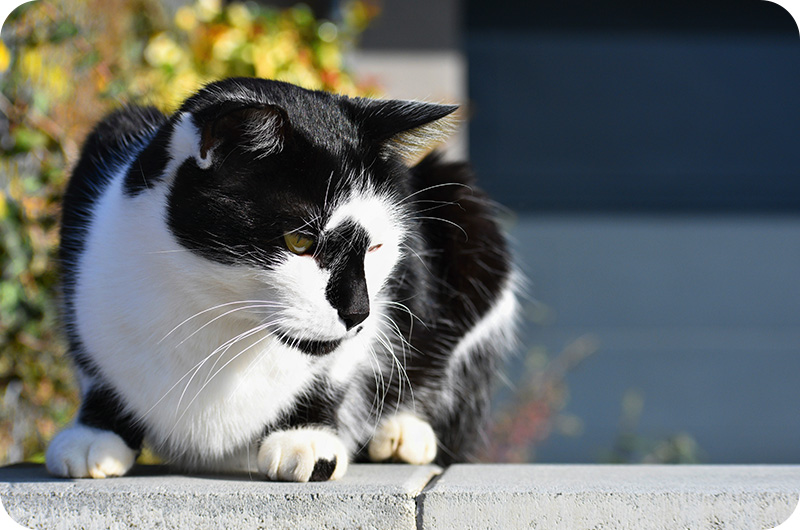
What Breed Are Black and White Tuxedo Cats?
Tuxedo cats can be found in many cat breeds, including the Maine Coon and the Munchkin cat.
![]() The Maine Coon
The Maine Coon
As one of the giant domestic cat breeds, these enormous felines are available in more than thirty color varieties, including black and white. They have thick bones, a lengthy body, and enormous, fluffy coats, contributing to their massive stature.
With their adaptive and pleasant demeanor, Maine Coons is renowned for their affection for all family members, including dogs and children. Some species owners have stated that their cats have a dog-like disposition and even walk them on leashes.
![]() Munchkin
Munchkin
The Munchkin is renowned as the Dachshund of the cat world because of their tiny legs resulting from a similar genetic abnormality. Their coats can be virtually any color or pattern; therefore, black and white cats are also possible. Some communities refer to them as magpies due to their penchant for stealing and storing their owners’ belongings.
However, don’t be fooled by their little legs; they are tremendously high-energy and always up for playing, whether with you, your children, or even your dog!
![]()
Next on your reading list:

